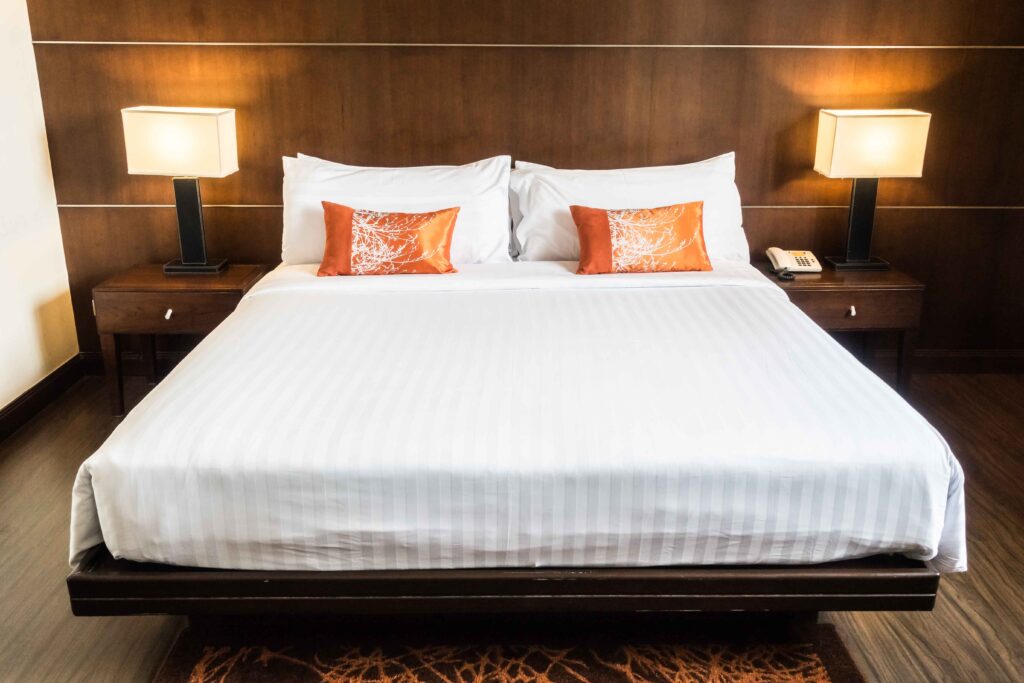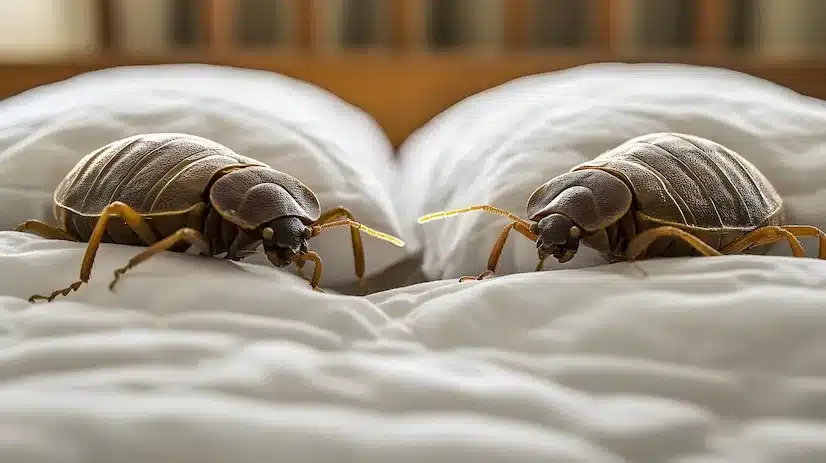
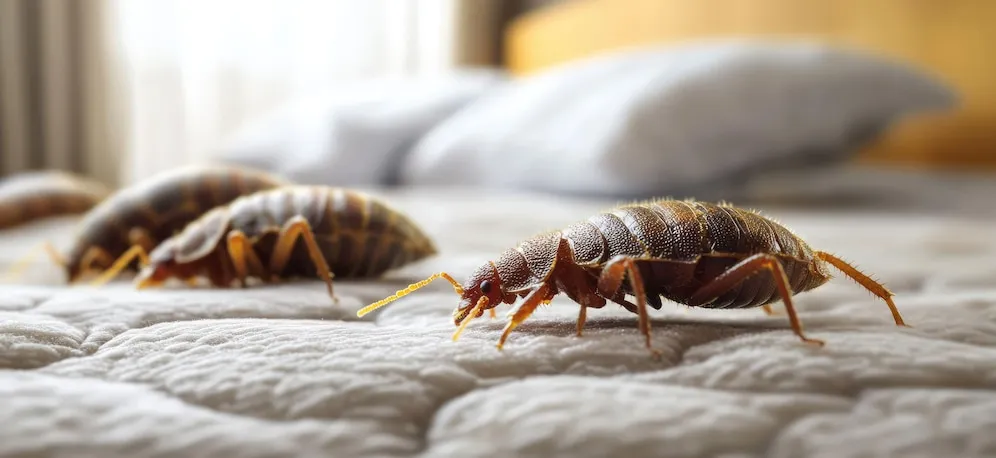
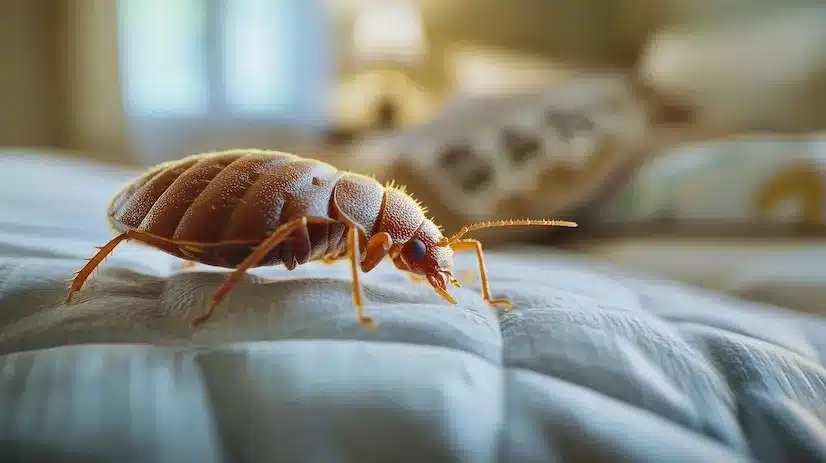
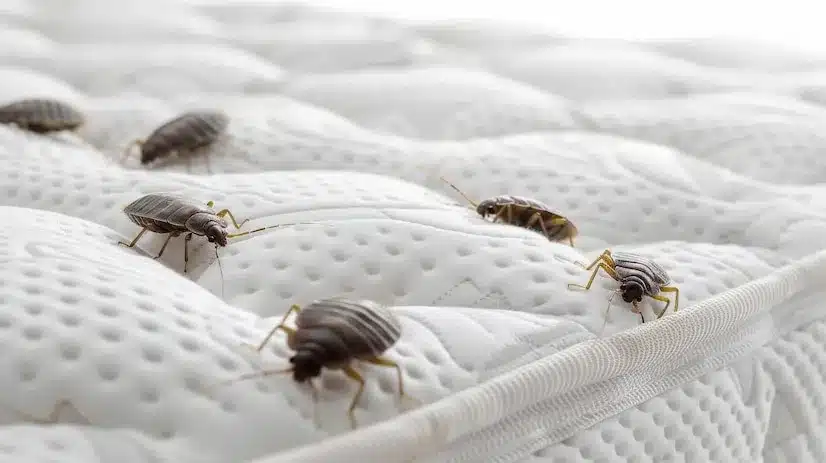

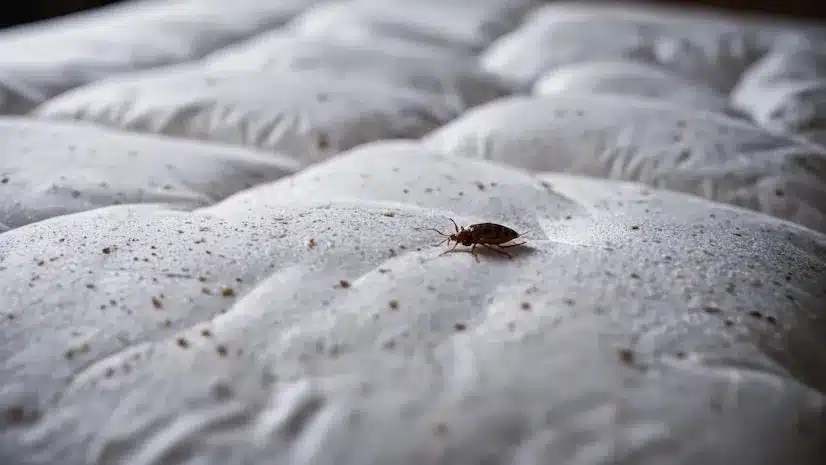
Pictures of Bed Bugs on the Mattress can help with identifying these pests, which are becoming a growing problem, especially in areas like the Smoky Mountains, where travel industry activity brings in many people from around the country. Visitors often unknowingly carry these tiny, resilient pests in luggage, spreading them easily to hotels, homes, and offices. With their ability to hide in small crevices like cracks in walls or outlets, bed bugs can be hard to spot, but knowing what to look for can make identification easier. Once you know how to spot a bed bug and its reddish color, you can act quickly to avoid full-blown infestations.
When inspecting your mattress or box spring, focus on the flat, round bodies of the mature bed bugs or their feces and blood spots on the bedding. Often, these pests will hide in hard-to-see places, such as the edges of the mattress, small crevices, or in the folds of furniture and clothing. They can also be found in bedrooms, usually after humans have fallen asleep. They emerge in the evening to feed on blood, typically within 5 to 10 days. The best way to prevent them from multiplying is to check for signs regularly and take immediate action.
How to Spot a Bed Bugs
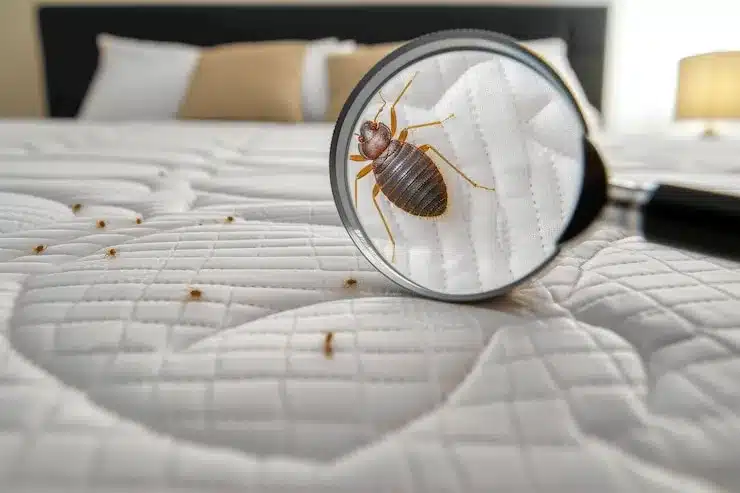
Identifying a bed bug can be challenging, but understanding what it looks like will help you tackle the problem before it becomes a full infestation. Bed bugs are small, oval, and brownish insects that feed on human or animal blood. Adult bed bugs have flat bodies and are often similar in size and color to an apple pip, depending on their age.
While they may be distinguishable from fleas by their large abdomens, they also bite exposed areas of the body, like the head, arms, or legs, while sleeping. The bites often appear in clusters, showing red raised bumps with a dark spot in the middle. Female bed bugs can lay 200-500 eggs over two months, typically in batches of 10 to 50, which are sticky and can attach to furniture or fittings. These eggs will hatch within a week, so it’s important to deal with a bed bug issue as soon as you spot the signs.
Where Are Bed Bugs More Commonly Found?
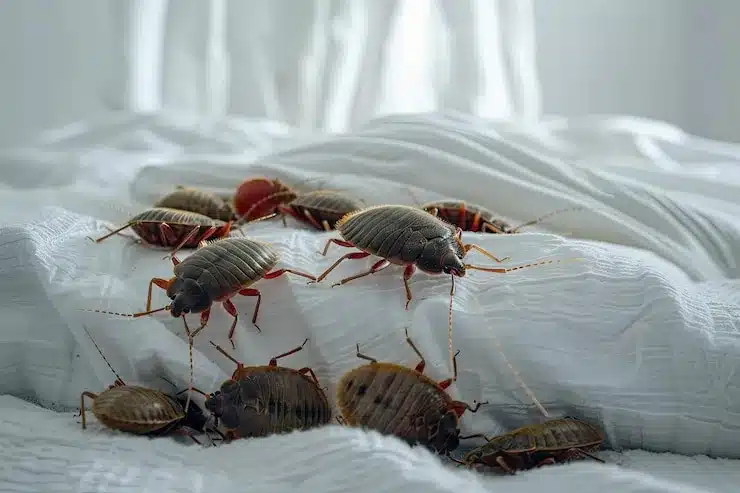
Understanding the behavior of bed bugs is key to figuring out where to look for them. These pests have flattened bodies, which allow them to conceal themselves in cracks and crevices around the room. Common hiding spots include floorboards, skirting boards, and furniture. Bed bugs often stay close to where a pet or human is sleeping. Statistically, about 35% of bed bugs are found in box springs, while 23% are in the mattress, and 13% hide in areas like the bed frame or headboard.
How to check for bed bugs on a mattress
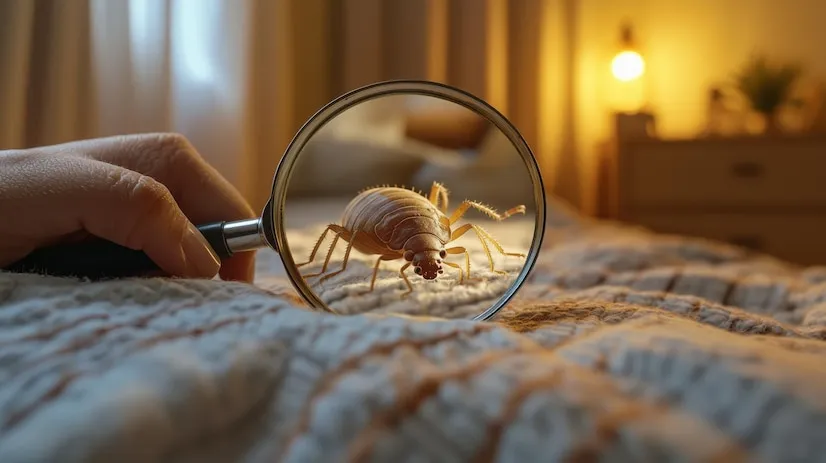
Bed bugs are small pests that hide in mattresses, often forming groups and laying clusters of eggs and eggshells, each about 1 mm in size. They are difficult to spot in broad daylight, but at night, they come out to feed. Look for signs like reddish stains, rust spots, or tiny dark stains on your bed sheets, often caused by crushed bed bugs. A careful search may reveal these pests and the subtle traces they leave behind.
10 Tips to Prevent Bed Bugs in Your Home
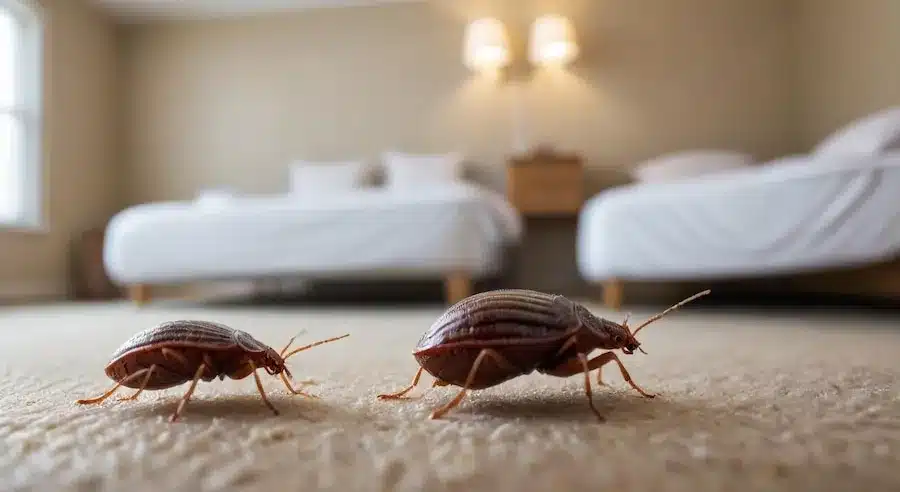
- Clean your mattress regularly: It’s key to ensuring your mattress lasts longer and to check for bed bugs every three months.
- Vacuum your mattress: For pocket-sprung mattresses, it’s safe to be vacuumed, but for foam styles like memory foam, sweeping is better to avoid damage.
- Prepare and care for your mattress: Follow a guide on preparing and caring for your mattress to keep it as hygienic as possible.
- Air your bedding: Air your bedding regularly to help spring back into shape and remove any excess moisture.
- Control dust mites: Letting your mattress cool down will help lessen the warmth, preventing dust mites from loitering around.
- Wash your sheets: Research shows that dirty items attract bed bugs, so make sure to wash your sheets to prevent bacteria build-up.
- Use an encasement mattress protector: A bed bug-proof encasement covers your mattress completely, blocking any entry point for pesky insects and trapping them to die from starvation.
- Keep your home clutter-free: Having too many objects in your home gives more opportunities for bed bugs to hide, making it harder to eliminate them.
- Vacuum regularly: Make sure to hoover skirting boards, sofa cushions, and under the bed to remove any bed bugs hiding in these spots.
- Be cautious with second-hand furniture: Always inspect second-hand items like bed frames or furniture for infections before bringing them into your home. Additionally, avoid using cardboard boxes for moving house; instead, opt for plastic containers.
Signs of Bed Bugs on a Mattress
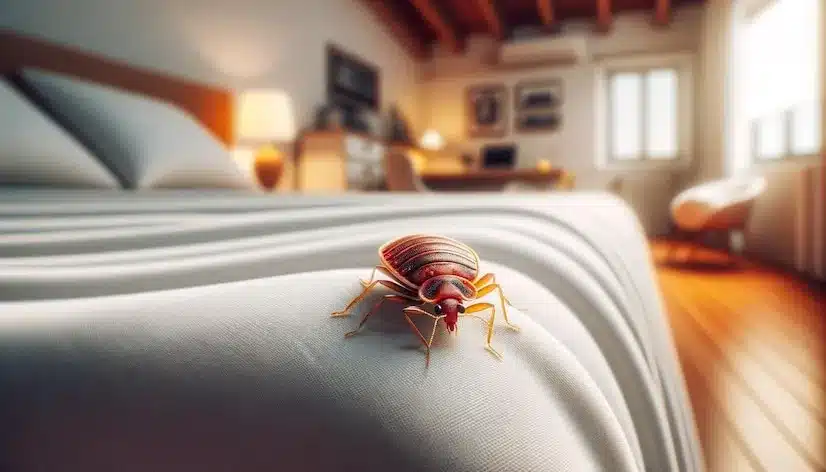
If you suspect bed bugs, here are the key signs to look for:
Visible Bed Bugs:
Look for adult bed bugs which are small but visible to the naked eye, often appearing as reddish-brown dots moving across the mattress.
Eggs and Nymphs:
Check for tiny, pearly white eggs the size of a pinhead. Nymphs, or young bed bugs, are smaller, lighter in color, and become reddish after feeding.
Bed Bug Droppings:
Look for small, dark stains on your mattress; these are digested blood that bed bugs excrete.
Shed Skins:
As bed bugs grow, they shed their outer exoskeletons, and you may find translucent skins in mattress seams or nearby furniture.
High-Risk Areas on a Mattress
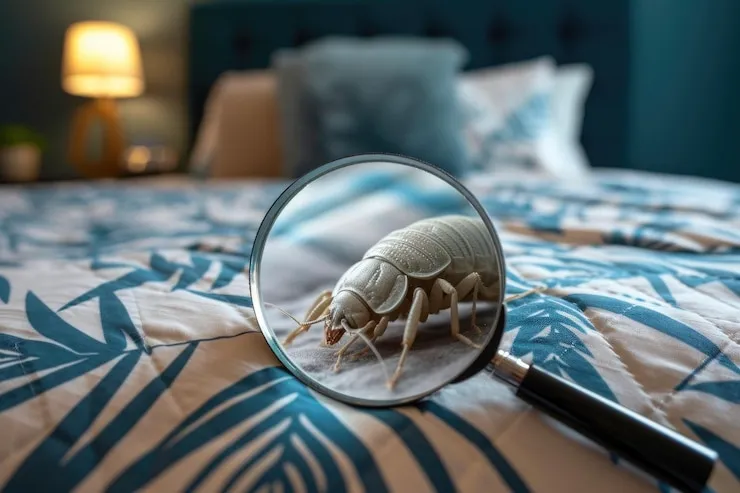
- Bed bugs are experts at hiding, making it crucial to thoroughly inspect your mattress for any signs of an infestation.
- Check the seams, edges, and folds of the mattress, as these are common hiding spots.
- Pay attention to tufts in the mattress, where thicker stitching can provide a perfect refuge for bed bugs.
- Check beneath mattress tags and labels, as these areas often hide bed bugs and are easy to miss.
- Box springs and bed frames are also common hiding places, as bed bugs often extend their infestation beyond the mattress itself.
Difference Between Bed Bugs and Other Pests
| Pest | Size | Shape | Bites Humans | Characteristics | How to Identify |
| Bed Bugs | Small | Oval | Yes | Feed on human blood, flat bodies, reddish color | Examine detailed pictures, check for feces or blood spots |
| Dust Mites | Invisible | N/A | No | Cannot be seen by the naked eye, do not bite | Look for allergy symptoms or signs of dust accumulation |
| Carpet Beetles | Larger | Oval Shape | No | Larger than bed bugs, not blood-feeding | Compare size and shape with bed bugs |
| Fleas | Smaller | Oval Shape | Yes | Active jumpers, smaller than bed bugs | Look for jumping movement and bites on the skin |
Conclusion
Bed bugs increasingly spread in high-traffic areas like the Smoky Mountains, often traveling through luggage, hotels, and transportation. These resilient pests can be challenging to detect, but by recognizing key signs like reddish stains, dark fecal spots, shed exoskeletons, and visible bed bugs, you can effectively identify them before an infestation grows. Regularly inspecting mattress seams, box springs, bed frames, and edges for these signs is crucial, as bed bugs often hide in small crevices and furniture folds.
Maintaining a clean, clutter-free home and using encasement mattress protectors to block potential entry points can significantly reduce the risk of infestation. Additionally, careful examination of second-hand furniture, cardboard boxes, and bedding will help prevent the introduction of bed bugs into your home. With proactive measures, such as vacuuming, airing out bedding, and washing sheets regularly, you can mitigate the risk of an infestation and safeguard your living space from these elusive pests.
FAQs
Health Risks: Although bed bugs do not spread diseases, their bites can lead to itching, irritation, and allergic reactions in certain people.
Infestation Spread: Sleeping on an infested bed increases the likelihood of spreading bed bugs to other parts of your home, exacerbating the issue.
The adults are visible to the naked eye, reddish-brown in color, wingless, and roughly the size of an apple seed. Immature bed bugs (comprising 5 nymphal instar stages) are also visible but smaller than the adults and have a translucent whitish-yellow color.
There is no need to discard your mattress after a bed bug infestation. This is highly discouraged. Throwing away infested items can be considered irresponsible, as it may lead to the spread of the infestation.
If you’re dealing with bed bugs while sleeping, it’s advisable to wear full-body pajamas. Fortunately, bed bugs can’t bite through clothing, so covering more skin reduces the areas they can feed on.


